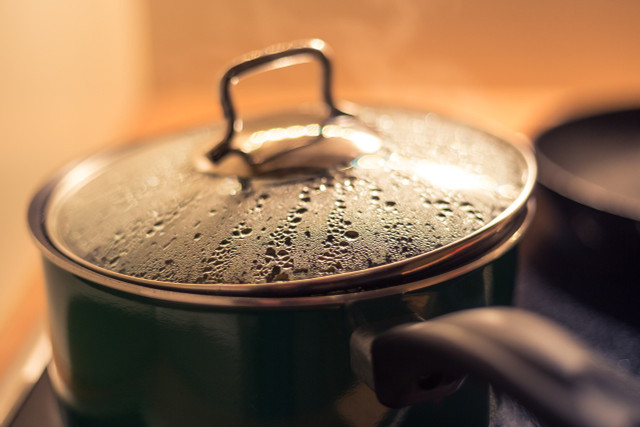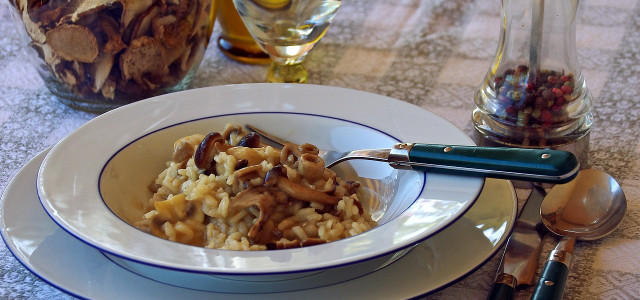Risotto is a creamy, Italian rice dish that is cooked in a broth until all the water is absorbed. It can be topped with vegetables, meat, or cheese and can be frozen to eat later.
Risotto is made from a variety of rice called arborio rice. When cooked it looks a lot wetter than boiled white rice and as it’s cooked in a broth, the color changes to a light brown.
If you find that you have made too much or want to bring your risotto to work next week for lunch you can freeze it to preserve it. Freezing is easy and involves only a slight loss in taste quality. You will need to ensure that you defrost it fully, before warming it again.
Storing and cooling your cooked risotto properly is the key to ensuring that it is safe to eat when reheated. It can be stored and reheated in the same way as cooked white rice.
Read on for some tips on freezing, thawing, and reheating.
3 Tips on How to Freeze Risotto
It is important to freeze risotto soon after cooking, it can keep in the freezer for two months. If left longer, it is still suitable to eat, but may lose some of its creamy taste. Meat and seafood are popular ingredients or toppings for risotto, and quite a lot of parmesan is traditionally stirred in, but we recommend trying sustainable plant-based options, such as vegan shrimp and vegan parmesan. There is a whole range of animal-friendly bacon alternatives that would go great with a risotto.
Ensure you freeze it soon after cooking, to avoid bacterial growth as it cools.
- It is best to freeze plain risotto, as different ingredients defrost in different ways, so this could affect the quality of your thawed risotto. You can add cooked vegetables or other toppings or ingredients after reheating the risotto.
- After it has stopped steaming, separate it into freezer-proof containers. We like plastic-free, airtight containers with lids, see the final section for some great alternatives. Cool without the lid for no more than one hour in the refrigerator. Don’t let it cool completely at room temperature, as it could encourage bacterial growth. If you have made a large pot, try spreading the risotto out on a baking sheet so it cools faster, then portion it into the containers.
- Cover the containers and put them in the freezer, always label them so you know what is inside and how old they are.
How to Thaw Risotto 3 Ways
There are 3 possible ways to thaw risotto.
- Stove: Put the risotto in a non-stick pan and add two tablespoons of water. Warm slowly on low heat. When it starts to defrost begin to stir constantly and add a little more water if it gets dry. Keep stirring until it has thawed.
- Refrigerator: If you plan ahead you can simply put your frozen risotto in the refrigerator the night before you want to eat it and it will be thawed in the morning. A faster option is to put the container in a bowl of lukewarm water before putting it in the refrigerator.
- Microwave: This is the fastest option. Remove the container lid and add 1-2 tablespoons of water. Lightly place the lid back on and use the defrost button to thaw the risotto for 30 seconds at a time. In between, you can try to further break it using a knife and add 1-2 tablespoons of water if it starts to dry out. This option is only suitable if you have chosen a microwave-safe container.
3 Tips on How to Reheat Risotto



(Foto: CC0 / Pixabay / scratsmacker)
It is essential that risotto is reheated until piping hot throughout before serving as cooked rice can contain bacteria that can cause food poisoning. Do not reheat rice dishes more than once.
To enhance the flavor you can add some grated (vegan) cheese to the top of the dish, alongside any other cooked ingredients like vegetables, or fried mushrooms.
Do not refreeze as the chance of harmful bacteria appearing is higher.
To reheat risotto, you have three options.
- Stove: Add a tablespoon of butter to a non-stick pan and melt on medium heat. Add the risotto and mix with 2 tablespoons of water or stock. Stir continuously to avoid burning and add more water or stock if it dries out.
- Microwave: Lightly cover and heat in the microwave for 1 minute at a time on a low setting, stirring in between and adding some water, stock, or butter (or vegan margarine). This will take 3-6 minutes, depending on the portion size. This option is only suitable if you have chosen a microwaveable container.
- Oven: Put the defrosted risotto in an ovenproof dish. Add one tablespoon of butter (or vegan margarine) and water or stock to cover it. Close with the ovenproof lid or some foil. Cook in the oven at 350-400 degrees Fahrenheit, for 10 minutes, longer for larger portion sizes. If there is still water left in the dish, just cook it for a little longer.
Suitable Containers to Freeze Risotto
To be as sustainable as possible it is best to avoid plastic containers. There are various alternatives available, such as:
- Silicone, such as in Vremi containers, (available on Amazon**) isn’t biodegradable, but is more durable than plastic which results in less waste. However, a lot of energy is used in the production process and silicone is not biodegradable or recyclable.
- Glass storage containers, available in your local market or on Amazon**, are easy to clean and don’t absorb stains or odors.
Stainless steel containers aren’t recommended for freezing rice dishes as they can affect the taste of the dish.
Read more:
- Foods that Never Expire: 8 Forever Foods for Your Kitchen
- Is Silicone Better Than Plastic? What You Should Know
- What to Do With Leftover Rice: 3 Simple Recipes
Do you like this post?







